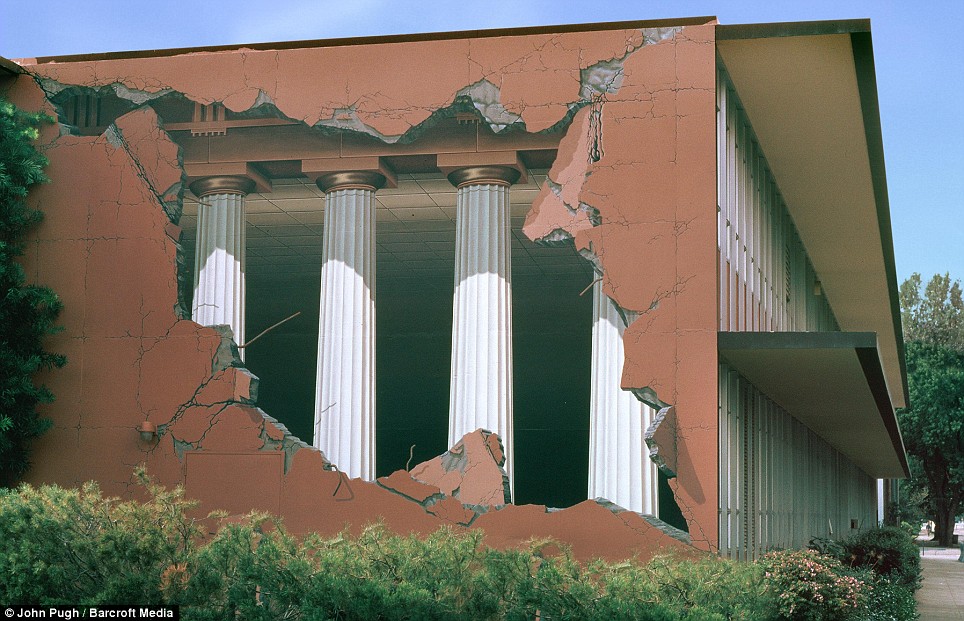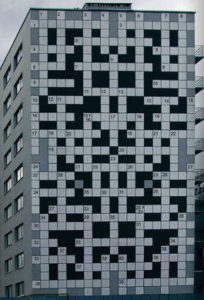 As we noted in the last blog entry, Tineke Meirink takes photos of frequently unattractive industrial elements and enhances those photos with paints. The artists who focus on trompe l’oeil (fool the eye art) paint on a wall with the intention of hiding what’s actually there. It is an ancient art, as surviving murals unearthed at Pompeii attest. It has also had various periods of revival, but mostly on small canvases where cloth looks touchable and fruit looks edible, for example. It’s been said that Rembrandt’s students painted coins on the floor of his studio for the pleasure of watching him bend down to pick them up.
As we noted in the last blog entry, Tineke Meirink takes photos of frequently unattractive industrial elements and enhances those photos with paints. The artists who focus on trompe l’oeil (fool the eye art) paint on a wall with the intention of hiding what’s actually there. It is an ancient art, as surviving murals unearthed at Pompeii attest. It has also had various periods of revival, but mostly on small canvases where cloth looks touchable and fruit looks edible, for example. It’s been said that Rembrandt’s students painted coins on the floor of his studio for the pleasure of watching him bend down to pick them up.
Among today’s artists working on a grand scale, California artist John Pugh deserves his reputation as someone who not only skillfully tricks the eye, but spurs the imagination. You can see his portfolio here, see the walls in a video here, and read about him here. Born in 1957, Mr. Pugh has had a long career in creating public art in half a dozen countries, and he still takes that responsibility seriously. As he notes, “The passerby is much more apt to engage with an uncommon architectural event or phenomenon while he or she unconsciously surveys the urban landscape.” His goal is to tantalize the viewer while creating a pride of place. He succeeds!
 A side note: The building art at left is not exactly trompe l’oeil, but it is eye catching. The crossword puzzle that forms one façade of a 100-foot (30 meter) apartment complex in Lviv, Ukraine is the world’s largest in physical size, if not in clues. It’s also an interactive art work aimed at bolstering critical thinking and urban exploration. About 80 clues are scattered throughout the city’s major landmarks. The answers are displayed in fluorescent lettering that can only be viewed when lit up at night.
A side note: The building art at left is not exactly trompe l’oeil, but it is eye catching. The crossword puzzle that forms one façade of a 100-foot (30 meter) apartment complex in Lviv, Ukraine is the world’s largest in physical size, if not in clues. It’s also an interactive art work aimed at bolstering critical thinking and urban exploration. About 80 clues are scattered throughout the city’s major landmarks. The answers are displayed in fluorescent lettering that can only be viewed when lit up at night.
